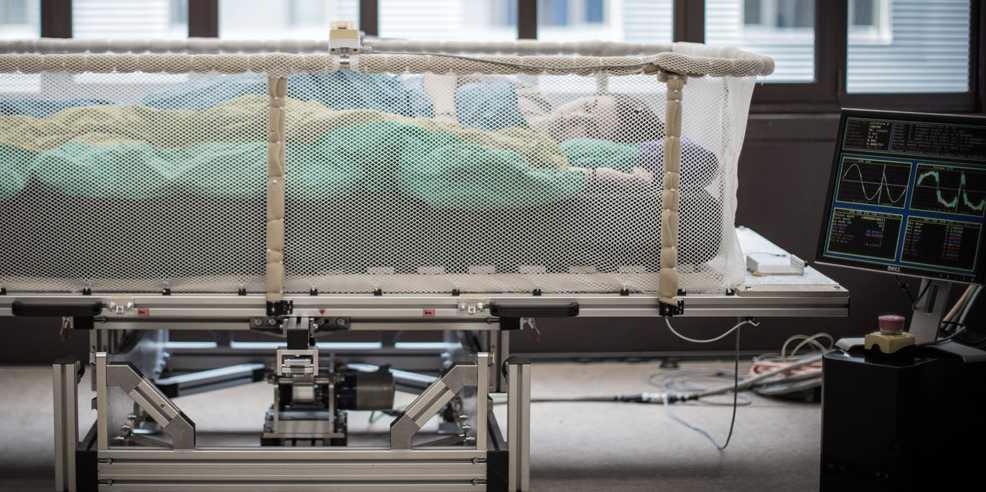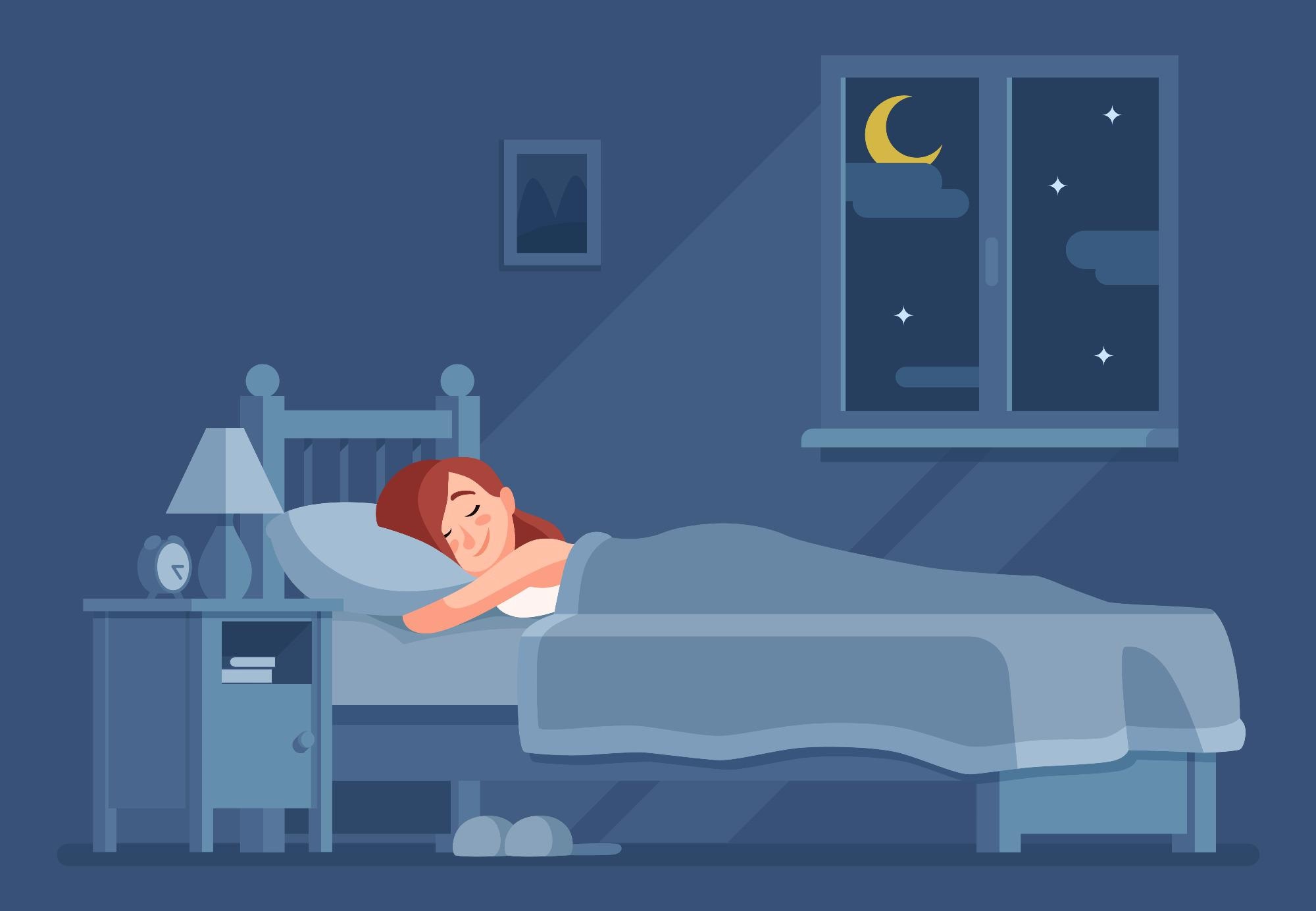For World Sleep Day, we speak to Alexander Breuss from the Sensory-Motor Systems Lab about their autonomous robotic sleep platform and how it is helping to improve individuals' quality of sleep.
Please could you introduce yourself and tell us what inspired your career into sleep?
I am a doctoral researcher at the Sensory-Motor Systems Lab of ETH Zurich and investigate how robotic beds can be used to improve sleep. My background is in computer science and medical robotics, and I have always been fascinated by how modern technology can be used in the health domain to improve quality of life.
Sleep is an inherently complex and interdisciplinary topic. At our lab, we are especially grateful to have close collaborations with some of Switzerland’s best sleep physicians. Together, we aim to build devices that many people with sleep problems can benefit from.
Sleep is essential for our health and wellbeing. Can you tell us about sleep's critical role in the body and what impacts poor sleep can have on our health?
A good night’s rest is vital to our health and wellbeing. Getting 7-8 hours of sleep a day is key for our immune system to function properly, our hormones to stay in a healthy balance, and our body to recover. Sleep also ensures that we feel refreshed and stay alert the next day.
Sleeping poorly once in a while will not affect our overall health but can negatively impact our awareness. For example, getting too little rest can be the cause of traffic accidents or other human errors. Prolonged poor sleep can have several negative consequences on our overall health including high blood pressure, cardiovascular diseases, obesity, and high glucose levels. If we have troubles falling asleep, staying asleep, breathing intermittently (often in combination with snoring), or performing large and violent movements (often noticed by our bed partner), we should address it to our general practitioner who will then transfer us to a sleep physician if necessary.

Every year the world celebrates World Sleep Day on the 18th of March. The theme for 2022 is ‘Quality Sleep, Sound Mind, Happy World.’ What does this message mean to you and why is it important to raise awareness surrounding the importance of a good night’s sleep?
Following good sleep hygiene – which includes getting enough quality sleep and following a regular sleep routine – helps our bodies to stay healthy and our minds to remain sound, focused throughout the day, and enjoy life. Very often our society is confronted with the paradoxical situation of working a lot while at the same time participating in countless social activities. This often results in getting too little sleep. The World Sleep Day is, therefore, a great tool to raise awareness about the importance of a good night’s sleep.
You are currently working on your Somnomat project. Can you tell us more about your projects and what some of your aims are?
Inside the Somnomat project, we are following two research domains; One covers controlled positional therapy and the other investigates potential benefits of rocking movements on sleep.
Controlled positional therapy is used to interact with the users after the onset of specific events. For instance, we have developed a sideward turning bed for positional obstructive sleep apnea patients that is equipped with unobtrusive sensors to detect sleep apnea events. Since these events occur almost exclusively in the supine position for this patient group, our bed will then turn the patients from the supine into lateral position upon apnea detection.
In our second research domain, we build rocking beds that mimic what mothers have done to their babies for thousands of years: rock them to help them fall asleep. The Somnomat Casa is our latest rocking bed that looks like a conventional bed but fits into private bedrooms and can be operated by the push of a button. Almost ten years of research went into the design and development of this bed which included determining suitable motion parameters and mechanical adaptations to have a practically inaudible rocking mechanism.
We are currently testing the rocking bed on an 11-year-old boy suffering from severe sleep problems who reports sleeping well on a train ride. By replaying the accelerations and sounds experienced on a train ride directly on our rocking bed, we investigate whether we can mimic the train ride, thereby improving his sleep quality.

Image Credit: Sensory-Motor Systems Lab
How could your autonomous robotic platform help to improve the sleep quality of the user?
One of the problems of sleep apnea is that the apnea episodes lead to short awakenings during the night, so-called arousals. Although these arousals happen subconsciously, people suffering from sleep apnea often feel tired throughout the following days. Reducing the number of arousals can therefore lead to a significant improvement in sleep efficiency and hence the quality of life.
Similarly, we are currently investigating whether our rocking bed helps users fall asleep and stay asleep. If successful, we not only improve the quality of life of the users but also reduce all the cofounding risk factors associated with poor sleep like high blood pressure and cardiovascular diseases.
Your intelligent bed is also able to reduce snoring activity in the user. How are you able to do this and what effect does snoring have on an individual's sleep quality?
The prevalence of snoring increases with weight and age and men are more often affected than women. Although occasional snoring mainly disturbs the sleep of the bed partner, habitual snoring can be a symptom of obstructive sleep apnea, where excessive tissue inside the throat relaxes and leads to a blockage of the airway, merely due to the gravitational forces acting on the throat tissue.
Our award-winning anti-snoring bed is equipped with several sensors that detect the onset of snoring episodes and a movable backrest that elevates the trunk in case of snoring onset. It has been shown in a proof-of-concept test night that four out of five snoring episodes could be stopped.
The use of robotics within health has seen an increased interest in recent years. What benefits does using robotics have for research and do you believe we will see more and more research turning to autonomous solutions?
One trend in sleep robotics is towards personalization and closed-loop interventions. Modern unobtrusive and privacy-sensitive sensors will be increasingly used to observe the sleep quality of individuals and trigger interventions whenever necessary. This is especially useful for the detection of sleep disorders where small adjustments made to the position of the user can have a huge benefit to the overall health and quality of life.
If our research shows to be beneficial for certain populations, we hope to see our outcomes being translated into commercial products such that many affected people can benefit from our work. After all, more than a third of the overall population is affected by sleep problems.

Image Credit: Tartila/Shutterstock.com
What do you believe the future of sleep research to look like? Are you hopeful that with continued innovation within this field, we will continue to improve our knowledge of sleep?
The key is to help as many people with sleep problems as possible and to further continue collaborating across all the relevant domains in sleep research. Sleep is such a complex topic and there are so many different sleep disorders that only a constant exchange between medical doctors, sleep physicians, and engineers will lead to novel solutions that many people can benefit from.
In the future, research that was previously conducted in complex lab environments will move to home environments. This is becoming possible as the recording and intervention devices are getting smaller and easier to use and data can be transferred easily over the internet. Collecting more in-depth data in environments the users are familiar with will then allow us to develop even better personalized interventions.
What is next for you and the Somnomat project?
In February 2022 our research group has – for the first time ever worldwide – started a long-term rocking bed interventional study in an out-clinic setting. We are very interested to see whether our rocking bed will improve the sleep of this individual.
In parallel, we are planning further studies with patients suffering from neurodegenerative disorders where we hope to see significant improvements from our rocking bed interventions.
Where can readers find more information?
Our lab website: https://sms.hest.ethz.ch/
Cybathlon, a world-wide platform initiated at our institute to promote research and development in the field of assistive technology: https://cybathlon.ethz.ch/de
Very interesting book from a colleague (German): WARUM WIR SCHLAFEN (Why we sleep), Albrecht Vorster
About Alexander Breuss
Alexander Breuss is a doctoral researcher at the Sensory-Motor Systems Lab of the Institute of Robotics and Intelligent Systems at ETH Zurich, Zurich, Switzerland, and is investigating the use of robotic beds for the treatment of sleep-related breathing disorders as well as the potential of rocking beds for the improvement of sleep across various patient groups..jpg)
He studied Computer Science and Robotics, Systems and Control both at ETH Zurich, Switzerland.